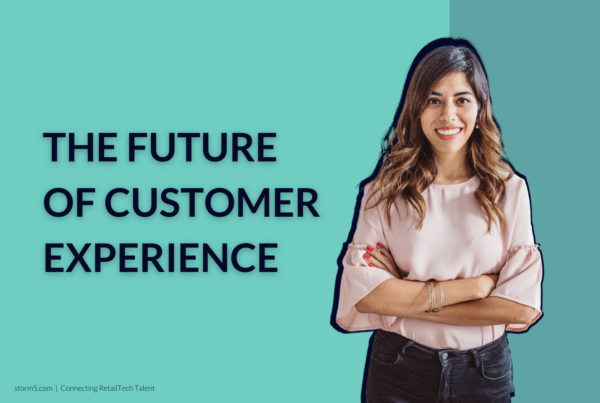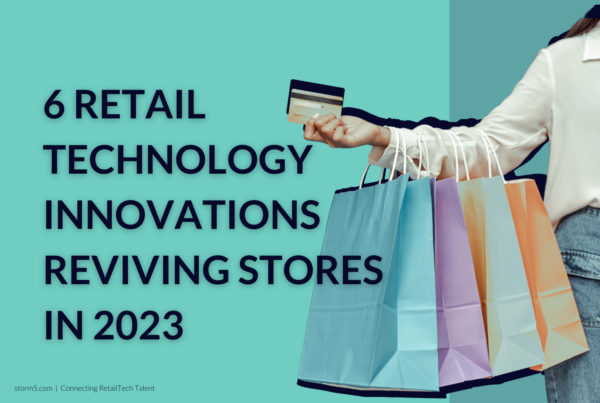4 Last-Mile Delivery Trends That Will Shape 2023
When it came to the larger supply chain and logistics industry, 2022 was an impactful year. Logistics experts might very well remember 2022 for the…

When it came to the larger supply chain and logistics industry, 2022 was an impactful year. Logistics experts might very well remember 2022 for the tremendous inflationary cost pressures rather than anything else. The overriding message was that those in charge of last-mile deliveries were frequently forced to do more with less. 2023 year is shaping up to be more of the same, and as now is the time to prepare to face the challenges ahead.
Global last-mile delivery is expected to grow by $165.6 billion between 2023 and 2027, at a CAGR of 15.62%. There are a number of forces driving the market, including a growing global e-commerce industry (with online retail sales forecasted to reach $6.51 trillion by 2023), premium goods and merchandise delivery services, and many warehouses.
The success of any brand’s future growth in 2023 and beyond is dependent on how it develops its last-mile delivery based on major trends. Here’s what to expect in 2023 and how to stay on top of the latest trends defining the last-mile.
Sustainability
At the height of the pandemic disruption, the discussion surrounding sustainable supply chains slowed down, but now global carbon reduction initiatives are back in full swing.
Sustainability and going green have become common buzzwords in many industries, but the focus here is on making manufacturing greener and more efficient while causing less environmental damage. It is no longer an optional extra for consumers but a necessity. A study in 2021 mentioned that 44% of consumers are more likely to buy from a brand that has a clear commitment to sustainability
Businesses are bringing their fulfilment centres closer to consumers to begin addressing this issue while also increasing delivery speed. Major retailers like Amazon, Walmart, and Instacart are all investing in micro-fulfilment centres to speed up deliveries while also going green.
An Accenture report mentioned that micro-fulfilment centres will reduce last-mile carbon emissions by 17 and 26% by 2025.
Sustainability will be a competitive differentiator for CEOs in 2023, not just a last-mile trend. Brands and retailers should invest in long-term route optimization to reduce empty miles and carbon emissions, as sustainability will no longer be a luxury but a requirement to win customers.
Omnichannel Retailing
For a long time, traditional retail was primarily black and white. The customer had to choose between placing an online order or making a purchase in person. However, thanks to omnichannel retailing, things have changed dramatically.
Omnichannel retailing is the process by which businesses integrate all channels to provide seamless shopping experiences to their customers. BOPIS is a well-known example, where a customer can purchase a desired item online and pick it up at the store. This heavily integrates both offline and online channels.
This is a global trend, with North American and Southeast Asian retail markets seeing a steady increase in omnichannel retail adoption. According to a NielsenIQ survey conducted in 2022, 86% of US consumers now buy goods both in-store and online. Consumers are demanding a unified shopping experience as the lines between online and offline shopping have blurred.
Businesses can improve control over delivery speed, flexibility, and cost by investing in omnichannel capabilities. It reduces the amount of time it takes for the product to travel through intermediaries and makes last-mile logistics more efficient. In 2023 and beyond, we will witness a highly integrated physical and digital, or phygital, world in retail. Retail shopping experiences will be hyper-personalized with the help of advanced data analytics insights to create seamless fulfilment experiences and maximise satisfaction for each consumer. As a result in 2023, we will see a sweeping wave of omnichannel retailing.
Predictive Analytics
In 2023, supply chain and logistics startups will begin concentrating on seizing opportunities for future growth. There will be a shift from a “survival” mindset to a “growth” mindset, which will help them resolve issues with last-mile delivery, which is a critical component of their supply chains.
With consumer ordering on the rise, logistics technology that allows businesses to make quick and informed decisions will be essential for differentiating their last-mile fulfilment experience. According to a Gartner study, 50% of supply chain organisations will invest in applications that support advanced analytics and AI capabilities by 2024.
Last mile data clarifies and transparently reveals what is happening in the final leg of the delivery journey. Data analytics is essential for continuous improved performance because it is used to create predictive models that drive future decisions. Predictive analytics enables shippers to move beyond the visibility of current issues and anticipate future issues, allowing for proactive risk mitigation. In 2023, predictive analytics will be a major trend in last mile delivery optimization.
We expect to see an influx of investments in last-mile logistics solutions as businesses continue to reevaluate and reshape their last-mile tech capabilities to boost their competitive advantage.
D2C
 The modern consumer highly values convenience and customization alongside price and wide product selection. This is why many businesses favour a D2C e-commerce model because it allows them to manage and control multiple aspects such as distribution, marketing, and customer experience. Businesses are using this model to gain a comprehensive picture of customer preferences through data insights and then leveraging them to build a strong customer base through personalised, end-to-end experiences.
The modern consumer highly values convenience and customization alongside price and wide product selection. This is why many businesses favour a D2C e-commerce model because it allows them to manage and control multiple aspects such as distribution, marketing, and customer experience. Businesses are using this model to gain a comprehensive picture of customer preferences through data insights and then leveraging them to build a strong customer base through personalised, end-to-end experiences.
D2C businesses must improve their last-mile capabilities or risk losing market share to competitors. According to a survey, the three most important factors driving D2C purchases worldwide are lower prices, free delivery, and free returns. Two of these three factors are determined by last-mile delivery. Hence, D2C brands prioritise the last mile.
SaaS (Software as a Service) products have proven to be a great asset for businesses seeking to establish a D2C presence with greater convenience, flexibility, and sustainability. It assists D2C businesses in dealing with, monitoring, managing, and optimising the varying economies of scale that last-mile logistics necessitates. Therefore, 2023 will be a year in which D2C brands strengthen their last-mile delivery and expand their D2C presence.
How Storm5 Can Help
These 2023 Last-Mile Delivery trends demonstrate the market’s continuing upward pattern. Many Last-Mile Delivery startups will look to expand their teams in order to meet this increased demand. This is where Storm5 can be of support. As Last Mile Delivery hiring experts, we connect Supply Chain and Logistics startups with the best minds in North America, Europe, and Asia.
For support with your hiring needs, get in touch today.







